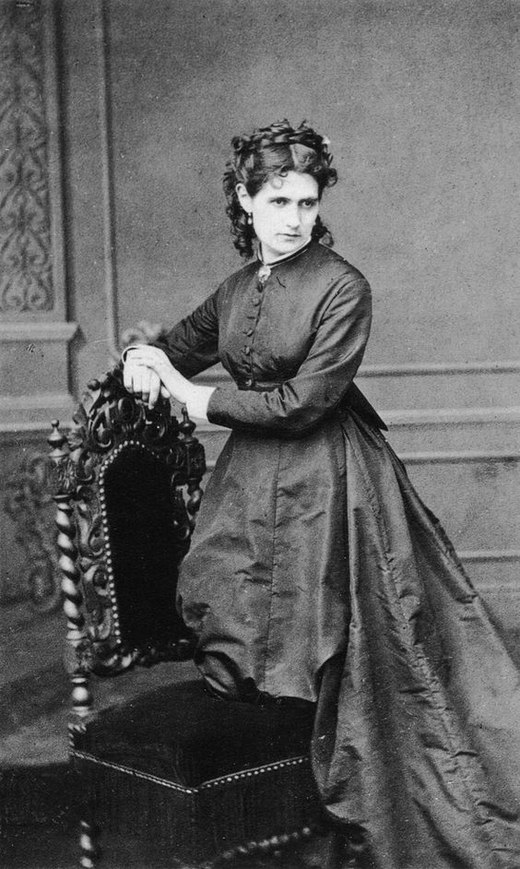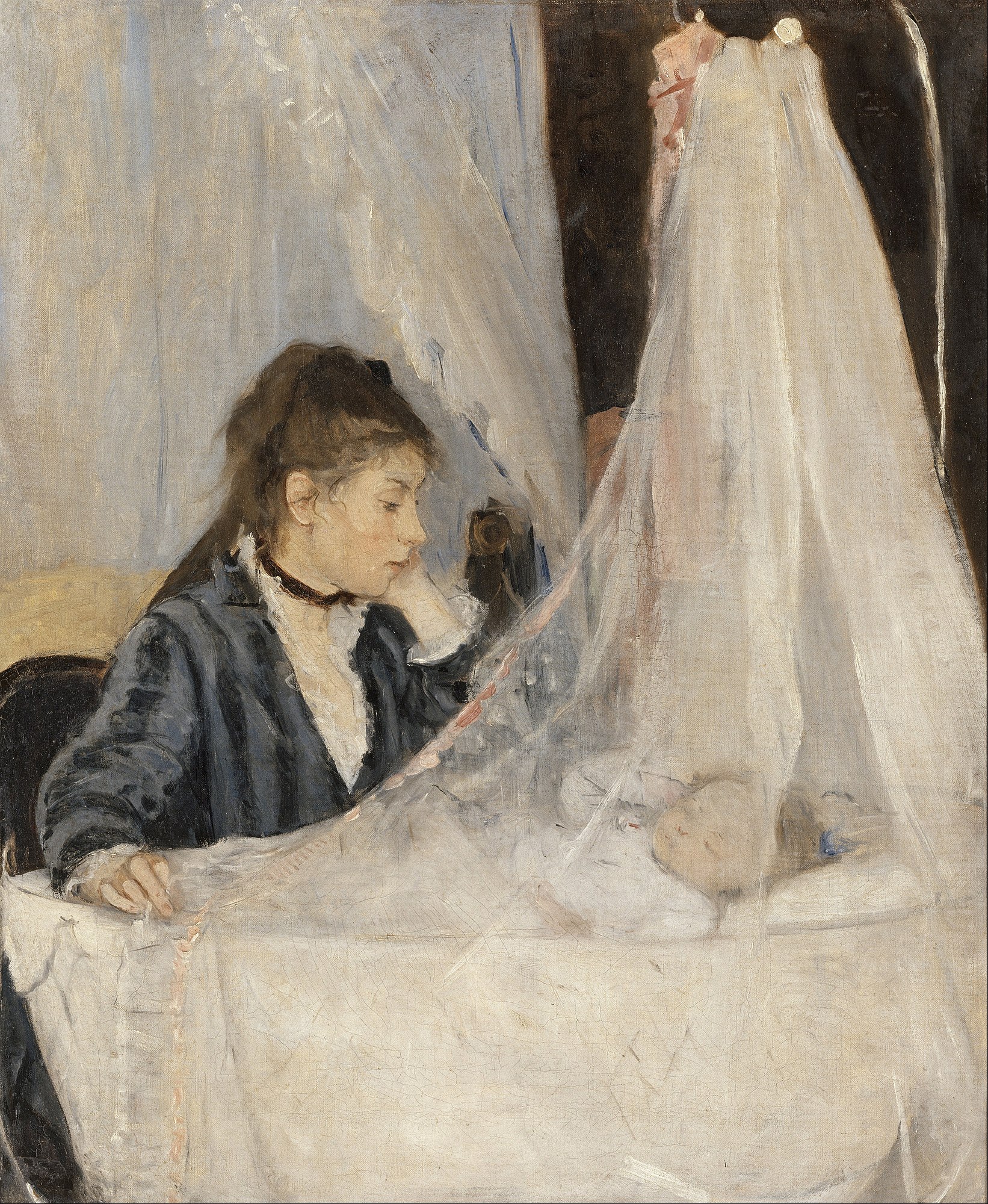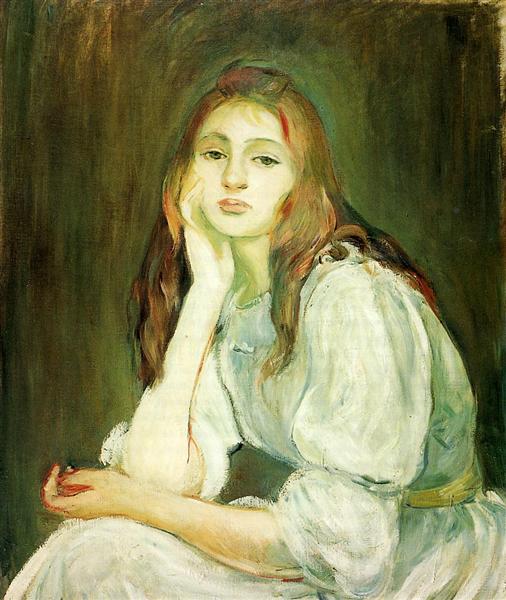
Unlike so many of the countless women artists cast aside by art history, Berthe Morisot was actually famous in her own time, only to be forgotten, minimized, and then rediscovered over the next century. She was a full member of the Impressionist’s social circles, and exhibited with them at all but two exhibitions. They even mounted the first solo exhibition of more than 300 of her works after her death. Unlike her male counterparts, however, Morisot didn’t have the same access to Parisian nightlife and the darker sides of the city. The subjects of her work have traditionally been cast in a light of appropriate femininity, focusing largely on the home life of women and children and the “pretty," colorful nature of her fluid brushwork.
The elements of Morisot’s work that have seemed to many art historians and critics as lacking in grit and integrity, namely the bourgeois subject matter combined with light colors and fluid brushwork, is actually the result of some top-notch artistic training. Both Berthe and her sister Edma began painting as children. They quickly discovered their talent and aimed to be professional artists. Training with Camille Corot, they picked up the practice of plein-air painting, or painting outside, that would come to define the Impressionist movement. Luckily, their family was well-off enough to support their artistic aspirations, and both sisters made their debut at the Paris Salon of 1864. Edma gave up her painting career when she got married, but Berthe, who didn’t get married until 1874, continued to paint for the rest of her life.

The Cradle, 1874, Musée d'Orsay
As far as her family and friends are concerned, Morisot was pretty supported in her work. When Albert Wolff sought to minimize her artistic achievement by saying “a feminine grace is maintained among the outpourings of a delirious mind," Berthe’s husband nearly challenged him to a duel.
Unfortunately, Wolff’s assessment of her paintings has still hung on in popular culture. Because Morisot painted so many images of women and the home, while the other (male) Impressionists kept growing in fame and popularity throughout the 20th century, Berthe’s paintings of her friends and family were sidelined as empty works by a minor female artist. Loving paintings of children or fashionable scenes aren’t what we’d come to expect from “great art” (though that doesn’t seem to have any effect on her brother-in-law Manet), and it’s easy to see how the art historians and curators of the 20th century were all too willing to minimize her contributions. Pastel colors and pretty dresses are obviously less deep than water lilies.
Recent scholarship has sought to re-situate Morisot’s work within its original artistic context, and give her the credit and recognition she deserves. Modern scholars are quick to note that while we may consider her works “pretty” today, when her paintings were first exhibited that wasn’t the popular opinion. The deconstruction of line and form seen in many works by Morisot was thoroughly modern at the time, and her work continues to carry an air of independence and unique perspective. Morisot’s late works, painted after the death of her husband and a move to her own studio space (the first actual studio of her entire career), take on a new use of color and form, inviting comparison to the avant-garde works of the Expressionists. Funny how she was doing it too but we never hear about those years of her work.

Portrait of Miss J.[ulie] M.[anet] (Julie Dreaming), 1894, Private Collection
It’s pretty clear that Berthe Morisot was never some minor artist, painting solely for her own amusement or to enhance her fashionable accomplishments. Her work shows a unique vision and interpretation of light, color and form. There have been several solo shows of her work in recent years, and while not every reviewers has been willing to admit that she’s just as good as her male counterparts, there seems to be a growing recognition in the public realm of her place in the Impressionist movement, and it’s about time.
By Kaila Temple
Sources
- Kessler, Marni R. "Unmasking Manet's Morisot." The Art Bulletin 81, no. 3 (1999): 473-89. doi:10.2307/3051353.
- Kessler, Marni Reva. "Reconstructing Relationships: Berthe Morisot's Edma Series." Woman's Art Journal 12, no. 1 (1991): 24-28. doi:10.2307/1358186.
- Blin, Sylvie. “Berthe Morisot.” The Art Tribune, 25 May 2012, www.thearttribune.com/Berthe-Morisot.html.
- Higonnet, Anne. Berthe Morisot. New York: Harper & Row, 1990.
- The Barnes Foundation. Berthe Morisot: Woman Impressionist. Philadelphia, PA: Barnes Foundation, 2018.









